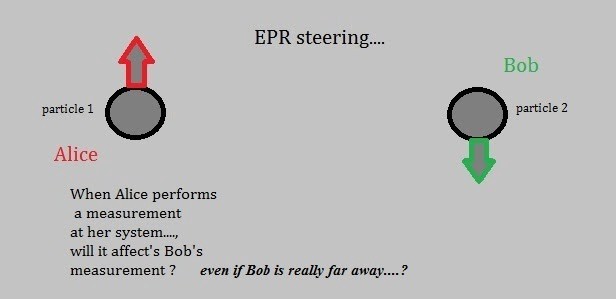|
home | what's new | other sites | contact | about |
||
|
Word Gems exploring self-realization, sacred personhood, and full humanity
Quantum Mechanics
return to "Quantum Mechanics" main-page
from https://physics.stackexchange.com/questions/56663/what-are-hidden-variables-exactly Hidden variables is an idea among some classical physicists that Quantum Mechanics isn't really as random and unmeasurable as it appears but could be entirely predictable if we knew the internal rules that were being applied. These are the hidden variables.
The hidden variable interpretation actually came into being as a criticism of Copenhagen interpretation, which you can read about here. This is yet another way to describe the weirdness of quantum mechanics we’ve been going over. The central idea of the hidden variable theorem was based on the EPR paradox, which essentially argued that the current theory of QM was incomplete. According to this interpretation, it is believed that quantum theory is incomplete as some variables are present in the theory which have not been known. The absence of these variables in previous theories of quantum mechanics has made quantum physics conflict with Einstein’s locality or local-realism. The EPR paradox was formed assuming reality physics and locality is true, also known as Realism-Localism. But what is locality? Locality is the main idea on which special relativity was formed. According to this, when two objects in space are separated, the effect of one object is transmitted to the other object, and the information travels with a speed that is lower than or equal to that of light. But this idea seemed to be contradicting the idea of entanglement in quantum mechanics, according to which two entangled particles stay connected in such a way that, any action performed on one particle affects the other at the same instant of time, no matter how far they are! That’s why it is also considered as “spooky action at the distance”.
Firstly, if we take two entangled pairs of particles and then separate them, no matter how far we take them, both of the particles will remain in a state of superposition until we measure them. Now, the EPR paradox argued that according to the Copenhagen interpretation, a particle remains in superposition until measured. However, when Alice performs a measurement at Particle 1 and measures ½ spin , then we know for sure that particle 2 is of -½ spin without even measuring. Secondly, if the separation is much too great, in order to transfer the information between two particles, the information has to move with a velocity equal to or more than that of light which violates theory of relativity. These flaws in the Copenhagen Interpretation made Einstein, Podolsk, and Rosen to come to the conclusions that Quantum mechanics is incomplete and there are some variables that are yet to be discovered to make this theory work. Criticism The paper on EPR paradox showing the need for hidden variables was mainly published to show the dissatisfaction with the Copenhagen interpretation of Quantum mechanics as it violates the idea of Realism-localism in physics. On the EPR paradox, Neil Bohr stated that when two particles are in entanglement, their wave function remains together, no matter how far they get separated. So, in the above example, when Alice made a measurement on particle 1, the whole wave function of the system ( i.e. particle 1 + particle 2 ) collapses and thus we know the spin of both the particles.
Editor's note:
From a number of sources, an analogy has been put forward to clearly depict Einstein’s charge of “hidden variables.” The entangled particles, with opposite spins, were like a pair of gloves, right- and left-handed. At the time of emission, the particles, that is, the potential particles, still in superposition state, did not yet reserve to themselves a property of spin (or any other property). This would be like possessing two sealed boxes: one containing the left-handed glove, the other box, the right; that is, potential gloves, for, as per our illustration, they would not yet exist, in any 3-D sense, in the boxes. When you open one of the boxes, however, then, of course, we’ll find one glove or the other -- a "measurement" has been taken -- just as the particles will eventually enter reality with one spin-orientation or the other. It was Einstein’s contention that, like the gloves, there is no true randomness in play here, but only apparently so. The particles-as-gloves, with certainty, thought Einstein, will be required to emerge, according to the nature of the case, as one kind or the other. This pre-set positioning Einstein called “hidden variables.” But this view has now been mathematically discredited (see John Bell's work). Bohr was correct.
|
||
|
|

